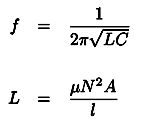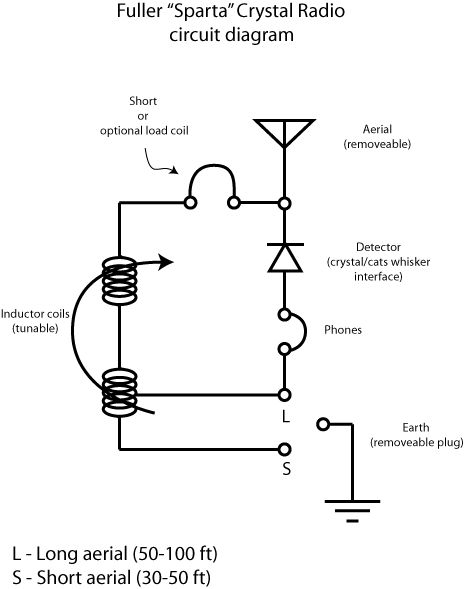A crystal radio is the simplest radio receiver. The set requires no external power other than the electromagnet radio wave received. As such, a long wire antenna often exceeding 15 m (or 30ft) is necessary, 30m being recommended, depending on the distance and power of the source.
The crystal, often Galena (Lead sulfide), together with a thin wire called a cats whisker acts as a detector diode demodulator (a simple rectifying envelope filter). This recovers the radio signal originally sent in the form of amplitude modulation of the carrier wave (AM radio signal). The contact between the metal of the cats whisker wire and the semiconductor crystal forms a Schottky barrier. Searching for a more sensitive part of the crystal could improve reception. To facilitate this, the cats whisker found on the ‘ Sparta’ crystal radio set is mounted on a kinematic arm for greater agility and searching for a signal.
To further improve the signal quality the Fuller “ Sparta” Crystal Radio has a tuning knob which adjusts the overlap between two coils insulated from each other by a dielectric material, which has since seized together. This allowed reception of broadcasts of wavelengths between 300m (600 kHz) to 500m (1 MHz). There are two aerial terminals marked S and L to maintain this tuning band with different aerial lengths. Terminal ‘S’ is for aerials between 30-50 ft (9-15m), terminal ‘L’, for aerials of 50-100 ft (15-30m). The aerial and the ground form a capacitor. So a longer aerial will provide greater capacitance. An RLC circuit such as this has a resonant frequency determined by

So if a large aerial increases the capacitance C then to maintain the same f we must decrease L. Figure 1 shows the circuit diagram for this radio set. Thus the connection ‘L’ reduces the number of turns in the coil N and therefore reduces L, maintaining the same resonant frequency.
Back in the day high power radio transmitters operated in the long wave (low frequency) regime, 1 kHz and up. To extend the reception the radio set can connect an optional coil by removing a short circuiting loop labeled “load coil”. This increases the overall inductance of the circuit, lowering the band to overlap with the high power signal.

Figure 1: Circuit diagram for the Fuller "Sparta" Crystal Radio